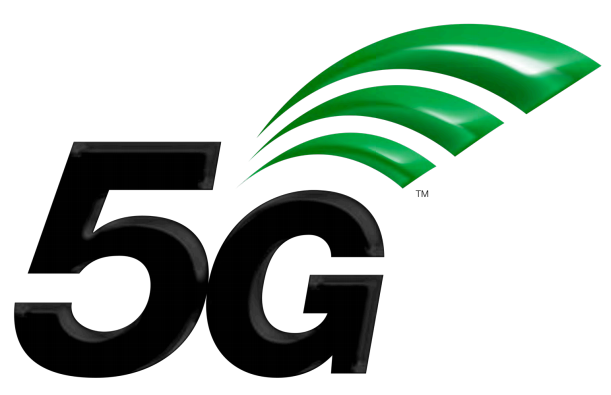MMW: Millimeter Wave essential to meeting spectrum crunch and data demand
Gigabit LTE is boosting capacity to meet demand today and setting the stage for a smooth roll out of 5G that will enable users to have a consistent network experience as they move from 5G hot spots onto gigabit LTE. But there’s a big difference between 500 Mbps or 1 Gbps and 10 Gbps delivered with latency less than 1 millisecond. And a big part of that difference is millimeter wave spectrum.
Currently operators are primarily focused on tapping millimeter wave spectrum to deliver fixed wireless services like enhanced broadband for businesses and multiple dwelling units like apartment complexes. The major driver here is economic– namely how a service provider can provide a fiber-like experience without the time and expense of laying fiber-to-the-home or fiber-to-the-premise.
In Austin and Waco, Texas, for instance, AT&T is using the 28 GHz band to trial 5G-backed Wi-Fi to small- and medium-sized business, as well as residential users, in support of use cases including enhanced broadband, VPN connections, 4K video streaming, VoIP and delivery of DirecTV. In 2017 Verizon tested 5G fixed wireless access in 11 U.S. markets, which the company said included “several hundred cell sites that cover several thousand customer locations.” In November last year, Verizon announced it would use that technology to deliver residential broadband services in three to five markets during the second half of this year beginning in Sacramento, Calif. In terms of use cases, Verizon specifically called out enhanced broadband, mobile and the internet of things, along with applications including 3D video and virtual reality. According to the carrier, “The market opportunity for initial 5G broadband services [is]approximately 30 million households nationwide.” But, while the attention around millimeter wave is currently on fixed wireless, millimeter wave will go mobile. Dynamics around capacity demand and spectrum limitations make it an imperative.
Ian Gresham, technology fellow at Anokiwave, described the paradigm: “In parallel with the continued evolution and development of LTE and the sub-6 GHz platforms, there’s this parallel activity to harness wider channel bandwidths at higher frequencies. That’s driven by the exponentially increasing demand for data that we’re seeing and obviously the increasingly saturated spectrum availability in the existing bands despite the hugely impressive results that we’ve already seen.”

Available Millimeter Wave Spectrum
Referencing the above , Gresham explained: “The horizontal axis represents the frequency spectrum from approximately 1 to 90 GHz on a relative scale. The orange…bars on the middle and right of the top figure show the approximately 11 gigahertz of new spectrum released by the FCC for both licensed and unlicensed use. Although the precise frequency allocations vary across the globe, there’s similar initiatives in Europe and Asia as well. The picket fence of blue lines on the left shows the fragmented…spectrum that’s available below 6 GHz. The available scale of the relative spectrum is quite easy to see.” The red and green blocks show frequency allocations for the aerospace and defense and satellite communications industries; Anokiwave was worked in A&D and satcom for more than a decade, Gresham said, which has resulted in millions of dollars in investments that have driven down the cost of attendant electronics and deployments.
Gresham continued: “Proximity, and in many cases overlapping of these spectral regions, make it obvious that the same technical problems, and therefore very similar technological solutions, apply for both requirements. What this means is that we’ve experienced the same design and manufacturing philosophy as well as the base technologies that we’ve been developing for aerospace and defense and satcom can be leveraged and used across the different market segments especially for now 5G telecommunications. That enables a high degree of reuse and that’s also enabled a platform-type approach to accelerate the development of active antennas.”
Active Antennas for 5G
“Why are millimeter wave active antennas critical for 5G?” Gresham asked. “The most important consideration is the high path loss at millimeter wave, which is somewhere around 62 dB per meter at 28 GHz for line-of-sight propagation. That means the development of a robust link seems extremely challenging. The reciprocal benefit is the short wavelength, which is about 5.6 millimeters at 28 GHz, means you can develop a large effective aperture in a very small area. That means you can generate extremely high radiated power through construction in the far field. Conversely at the receiver the radio sensitivity can also be scaled by increasing aperture size. Because the antennas are active, you can change the direction of the beam very dynamically to serve multiple users, you can provide spatial orthogonality through adaptive beam forming or shaping and you can rapidly change point and direction to adapt to changing propagation channels in dynamic environments. You can also form sub arrays of radiating elements which can be used to provide the MIMO functionality…which is also applicable for increasing data throughput and providing some link robustness.” But there are problems to be solved, Gresham said, “especially around the issues of user mobility. How do you implement this functionality in the user equipment (UE)?” More innovation will be needed for future mobile terminals.
For Further Information
For More Information on 4G, 5G & LTE technology, Please Contact Us
